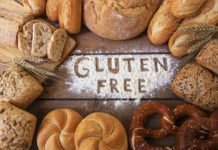Years ago if you asked a physician whether diet had any effect on autoimmune disease flare-ups they would have just brushed it off as being purely anecdotal. While some doctors are still reluctant to associate specific diets with improved outcomes many will agree that some foods are more beneficial and others more detrimental to the health of autoimmune disease sufferers. This article will explore the impact of dietary changes on autoimmune disease flare-ups.
This post contains affiliate links. If you make a purchase through a link, I may receive a small commission, at no cost to you.
Inflammation plays a significant role when it comes to autoimmune flare-ups. Reducing inflammation in the body is the key to managing autoimmune disease through dietary changes.
While dietary changes can help reduce inflammation in the body, which can help reduce the severity of autoimmune disease flare-ups, always consult with your physician before reducing or eliminating prescription medicine. Please refer to the Privacy Policy and Disclaimers notice for additional details.
Table of Contents
Avoiding inflammatory foods
Autoimmune diseases like multiple sclerosis, rheumatoid arthritis, inflammatory bowel disease, type 1 diabetes and psoriasis are more prevalent in industrialized societies where the “Western Diet” has become a way of life. The Western Diet is high in fat, carbohydrates, cholesterol, proteins, sugar, salt and calories and low in vitamins and minerals. In addition to containing artificial flavors and colors, fast food contains preservatives, genetic modifications and chemical ingredients. Sometimes these man-made substances interfere with naturally occurring processes within the body. For example, endocrine disrupting chemicals (EEDC) are chemicals introduced into the environment by industrial, agricultural and chemical companies. These chemicals mimic estrogen and are known to interfere with the autoimmune process in individuals with a genetic predisposition. Not only does these chemicals increase the risk of an immune response, but they also have been linked with other conditions like eczema, irritable bowel syndrome, migraines and exfoliative dermatitis.
According to the Arthritis Foundation saturated fats like those found in cheese and pizza and foods prepared in partially hydrogenated oils like fried products, cookies, crackers and butter, can create inflammation in the body. These foods should be avoided. Other culprits include gluten, casein (found in dairy products), MSG, aspartame and alcohol. Diets high in Omega-6 fatty acids have also been shown to increase inflammation.
Eating more anti-inflammatory foods
Studies have shown that some foods have the ability to reduce inflammation markers in the blood. Green leafy vegetables like Swiss chard, kale, collards and spinach are high in antioxidants which help reduce free radicals, harmful molecules that damage cells, proteins and DNA. Fatty fish like salmon, mackerel, sardines, herring and anchovies are rich in Omega-3 fatty acids and help reduce the production of molecules like cytokines that promote inflammation. Other foods rich in Omega-3 fatty acids include nuts, seeds like flaxseed and sunflower seed, avocados, edamame and olive oil. Many of these foods make up the Mediterranean diet, named so for the geographic location of the culture whose lives are longer and healthier as a result of consuming them.
Determining allergies and sensitivities
Allergies and sensitivities pose another threat. People like myself who suffer from multiple allergies and sensitivities should proceed with caution before endeavoring to try any new diet. Avocados may be an excellent source of omega-3 fatty acids, but if you’re allergic to them, eating them would probably do you more harm than good.
Some foods just don’t agree with you. Certain foods just make me flare, like foods high in FODMAPS (Fermentable Oligo-, Di-, Mono-saccharides And Polyols”). I was fortunate to have a dietician that made this connection with the foods I reacted to. I often wonder when I hear people mention that a particular diet didn’t work for them, whether hidden allergies and sensitivities were to blame.
You May Also Want To Read:
Eating Clean

Eating clean involves eating whole foods in their natural state, minimally processed and free of chemicals, preservatives, artificial colors, artificial flavors, binders, fillers, added sugars, artificial sweeteners and added salt. It’s the exact opposite of fast food which has been packaged, flash-fried, deep-fried, frozen and pasteurized. Clean eating is not a diet fad, but a way of life. It’s what our ancestors did long before fast foods (or refrigeration for that matter) existed. Whether you’re a proponent of the Paleo diet or not, eating foods similar to what would have been hunted and gathered during the Paleolithic era over 10,000 years ago such as lean meats, fish, fruits, vegetables, seeds and nuts, one thing is certain. Our ancestors prepared their own foods from scratch without the help of artificial colors, flavors, additives, preservatives and genetically modified organisms (GMO’s). Granted, society is a long way off from those days. Life was a lot simpler then…slower. Today we live in a fast-paced society where most of us barely have a few minutes to sit down and relax, much less prepare entire meals using all natural ingredients. Where do you even start? That depends on where you are today with respect to your eating habits. Do you currently prepare a large percentage of your own meals or do you eat out frequently? Do you consume refined flour, rice, pasta and bread that has been stripped of valuable nutrients or do you eat whole grain products? Do you buy fresh fruits and vegetables or is the bulk of your produce frozen or canned with added preservatives? Maybe you’re somewhere in the middle like I was when I first started out.
Going Organic
Conventional food contains pesticides, antibiotics, genetically modified organisms (GMO), artificial colors, preservatives, and the list goes on. These substances increase inflammation in the body, which can result in autoimmune flare-ups in sensitive individuals.
Organic produce must be grown on soil that has been free of pesticides for at least 3 years prior to harvest. In addition, pesticides, synthetic fertilizers, genetically modified organisms and sewage sludge can not be used at any time. Meat, poultry, dairy products and eggs can only come from animals who have never received antibiotics or hormones and have been raised on certified organic land. Animals must be fed 100% certified organic feed that’s free of animal byproducts and be given outdoor access. Packaged food containing multiple ingredients must be free of artificial colors, flavors, preservatives and genetically modified substances.
Years ago it was nearly impossible to find organic foods in the grocery store. Now entire aisles and sections are devoted to organic products. In order to be labeled USDA certified organic, strict guidelines must be followed that govern how produce is grown, animals are raised and how both are processed and handled..
People consume organic foods for the presumed health benefits. However, having organic labelling doesn’t ensure healthiness, nor does it ensure the items are 100% organic. Some packaged organic foods are high in sugar, salt, fat and calories. Read labels carefully so you can make an informed decision. There are 4 types of organic labelling. Organic food can be labeled 100% organic as is the case for single ingredient foods like produce, meat and eggs. If a multi-ingredient food is at least 95%, 70% or less than 70% organic it is labeled “organic”, “made with organic” or “organic ingredients”, respectively.
Test and prove for yourself
One word of caution, every food isn’t for everybody, and just because a food is beneficial for everyone else doesn’t necessarily mean it will be beneficial for you. Some foods are known to be problematic for people with specific autoimmune diseases. Berries, known to be high in antioxidants, fiber, vitamins and minerals, are a “wonder fruit” for some. But for those suffering from pemphigus vulgaris, high consumption of tannins, a naturally occurring chemical compound found in strawberries, blueberries, strawberries and grapes, have been associated with the onset of the disease.






















